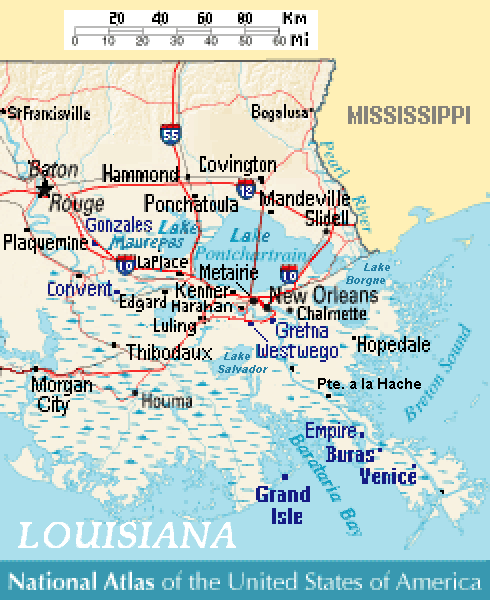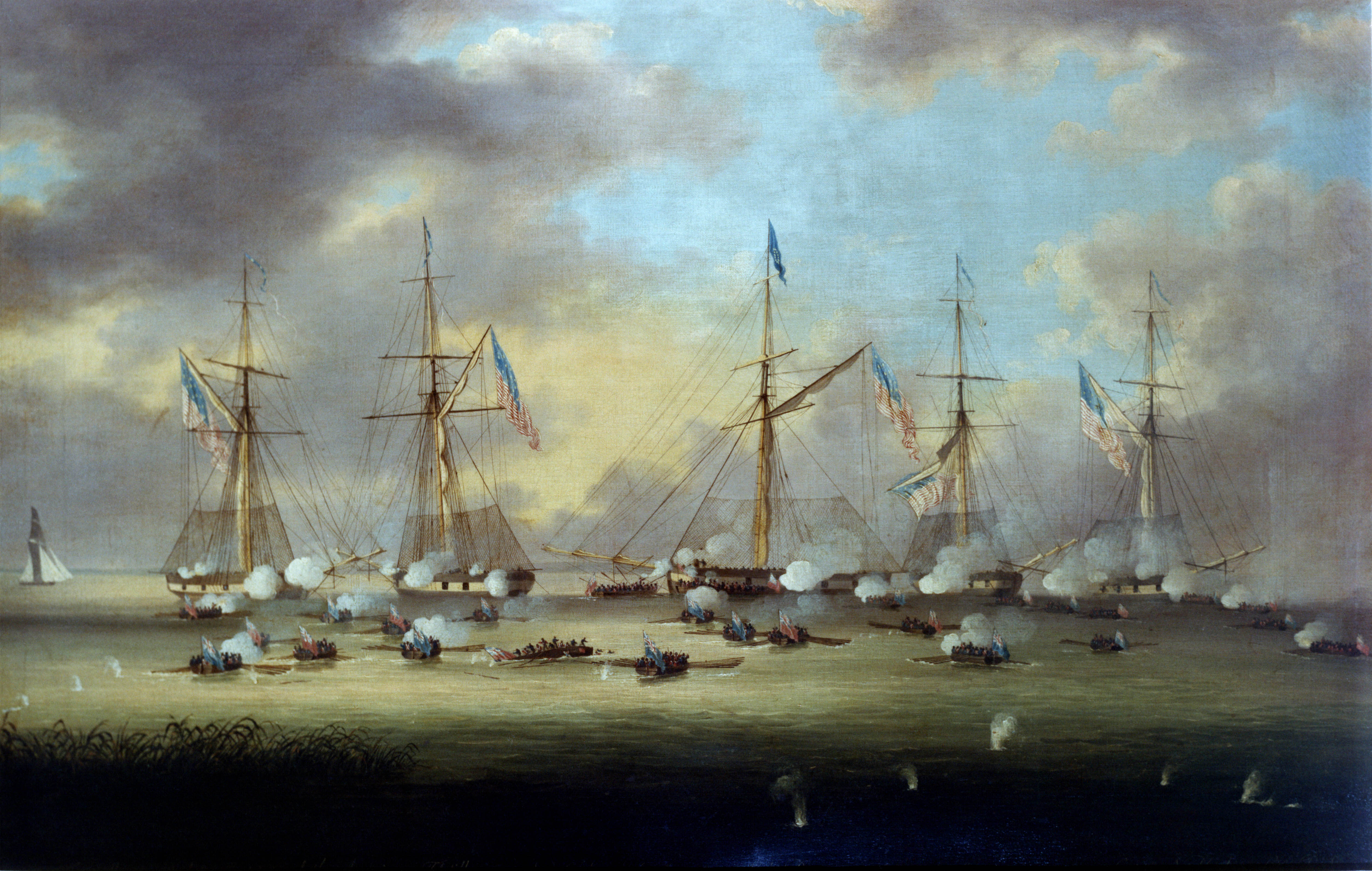|
USS Sea Horse (1812)
The first USS ''Sea Horse'' was a one-gun schooner that the Navy purchased in 1812 for service on Lake Borgne, near New Orleans, Louisiana. It is claimed she was one of 15 vessels available to Commodore Daniel Todd Patterson in New Orleans at the outbreak of war with Britain in 1812. The ''Sea Horse'' and USS ''Alligator'' accompanied a squadron of five gunboats at the end of 1814. In addition to these vessels, there was also a further gunboat at Fort St. Philip, as well as the USS Carolina (1812) and USS Louisiana (1812). She saw action as a tender to a squadron of gunboats, under the command of Lieutenant Thomas ap Catesby Jones, that in December 1814 opposed the British advance on New Orleans. On the afternoon of December 13, 1814, at 2:00pm Jones despatched ''Sea Horse'' to a store house, to remove its contents, to prevent capture by the British. At 3:45pm, ''Sea Horse'' was moored at Bay St Louis next to a store house and a battery of two 6–pounder cannons. The schoo ... [...More Info...] [...Related Items...] OR: [Wikipedia] [Google] [Baidu] |
New Orleans
New Orleans ( , ,New Orleans . ; french: La Nouvelle-Orléans , es, Nueva Orleans) is a consolidated city-parish located along the in the southeastern region of the U.S. state of Louisiana. With a population of 383,997 according to the 2020 U.S. census, [...More Info...] [...Related Items...] OR: [Wikipedia] [Google] [Baidu] |
Schooner
A schooner () is a type of sailing vessel defined by its rig: fore-and-aft rigged on all of two or more masts and, in the case of a two-masted schooner, the foremast generally being shorter than the mainmast. A common variant, the topsail schooner also has a square topsail on the foremast, to which may be added a topgallant. Differing definitions leave uncertain whether the addition of a fore course would make such a vessel a brigantine. Many schooners are gaff-rigged, but other examples include Bermuda rig and the staysail schooner. The origins of schooner rigged vessels is obscure, but there is good evidence of them from the early 17th century in paintings by Dutch marine artists. The name "schooner" first appeared in eastern North America in the early 1700s. The name may be related to a Scots word meaning to skip over water, or to skip stones. The schooner rig was used in vessels with a wide range of purposes. On a fast hull, good ability to windward was useful for pri ... [...More Info...] [...Related Items...] OR: [Wikipedia] [Google] [Baidu] |
Lake Borgne
Lake Borgne (french: Lac Borgne, es, Lago Borgne) is a lagoon of the Gulf of Mexico in southeastern Louisiana. Although early maps show it as a lake surrounded by land, coastal erosion has made it an arm of the Gulf of Mexico. Its name comes from the French word ''borgne'', which means "one-eyed." Geography In southern Louisiana, three large lakes—Maurepas, Pontchartrain, and Borgne—cover 55% of the Pontchartrain Basin. A brackish marsh land bridge and Lake St. Catherine separate Lake Pontchartrain from Lake Borgne. The Rigolets and Chef Menteur Pass are the two open water connections between Pontchartrain and Borgne. Coastal erosion has transformed Borgne into a lagoon connecting to the Gulf of Mexico. Early 18th-century maps show Borgne as a true lake, largely separated from the gulf by a considerable extent of wetlands that have since disappeared. In a 1902 case before the United States Supreme Court over the oyster banks at the boundary between Louisiana and Missis ... [...More Info...] [...Related Items...] OR: [Wikipedia] [Google] [Baidu] |
New Orleans, Louisiana
New Orleans ( , ,New Orleans . ; french: La Nouvelle-Orléans , es, Nueva Orleans) is a consolidated city-parish located along the in the southeastern region of the U.S. state of . With a population of 383,997 accord ... [...More Info...] [...Related Items...] OR: [Wikipedia] [Google] [Baidu] |
USS Alligator (1813)
USS ''Alligator'' was a sloop in the United States Navy during the War of 1812. The U.S. Navy purchased ''Alligator'' in 1813 (or 1812) at New Orleans, Louisiana. Commissioned as a tender at New Orleans, she served on that station under the command of Sailing Master Richard S. Sheppard until late in 1814 when the British captured her at the Battle of Lake Borgne. U.S.Navy, DANFS, Alligator prgh.1 Service After the capture of Pensacola on 7 November 1814 Major General Andrew Jackson arrived at New Orleans on 1 December to make preparations for the defense of that city. He organized with Master Commandant Daniel Patterson of the U.S. Navy to send a flotilla to Lake Borgne to guard and defend against the approach of Vice Admiral Sir Alexander Cochrane and his fleet. Lieutenant Thomas Jones commanded the American flotilla of five large gunboats , which had about 180 men for the crews. The gunboats were armed with 24 and 32-pounder long guns, 6 and 12-pounder carronades, and sw ... [...More Info...] [...Related Items...] OR: [Wikipedia] [Google] [Baidu] |
Fort St
A fortification is a military construction or building designed for the defense of territories in warfare, and is also used to establish rule in a region during peacetime. The term is derived from Latin ''fortis'' ("strong") and ''facere'' ("to make"). From very early history to modern times, defensive walls have often been necessary for cities to survive in an ever-changing world of invasion and conquest. Some settlements in the Indus Valley civilization were the first small cities to be fortified. In ancient Greece, large stone walls had been built in Mycenaean Greece, such as the ancient site of Mycenae (famous for the huge stone blocks of its ' cyclopean' walls). A Greek '' phrourion'' was a fortified collection of buildings used as a military garrison, and is the equivalent of the Roman castellum or English fortress. These constructions mainly served the purpose of a watch tower, to guard certain roads, passes, and borders. Though smaller than a real fortress, the ... [...More Info...] [...Related Items...] OR: [Wikipedia] [Google] [Baidu] |
USS Carolina (1812)
USS ''Carolina'', a schooner, was the only ship of the United States Navy to be named for the British colony that became the states of North Carolina and South Carolina. Her keel was laid down at Charleston, South Carolina. She was purchased by the Navy while still on the stocks, launched on 10 November 1812, and commissioned on 4 June 1813 with Lieutenant J. D. Henley in command. ''Carolina'' set sail for New Orleans, Louisiana, and while making her passage, captured the British schooner ''Shark''. Arriving at New Orleans 23 August 1814, she began an active career of patrol directed against possible British action as well as the pirates that infested the Caribbean Sea. On 16 September 1814, ''Carolina'' attacked and destroyed the stronghold of the notorious Jean Lafitte on the island of Barataria. ''Carolina'', with the others of the small naval force in the area, carried out the series of operations which gave General Andrew Jackson time to prepare the defense of New Or ... [...More Info...] [...Related Items...] OR: [Wikipedia] [Google] [Baidu] |
USS Louisiana (1812)
USS ''Louisiana'', was a sloop built in New Orleans in 1812 and she played a vital role in the defense of Louisiana during the War of 1812 between the United States and the United Kingdom. Career Originally built as a merchant ship for the cost of $15,500, the USS ''Louisiana'' displaced 341 tons, and rated sixteen 24-pounder guns. She measured ninety-nine feet, six inches on the deck, beam of twenty-eight feet, and a fourteen foot deep hold. ''Louisiana'' was unmanned at the start of the campaign, and commanded by Captain Charles C. B. Thompson. From 23 December 1814 to 8 January 1815, the sloop ''Louisiana'' pounded advancing British troops, providing naval gunfire support for General Andrew Jackson's forces. When British troops advanced up river beyond the range of the deadly cannon fire of the ''Louisiana'', the crew did not let the absence of wind deter their support. Crewmembers waded ashore with mooring lines and towed their sloop up river against the currents of the ... [...More Info...] [...Related Items...] OR: [Wikipedia] [Google] [Baidu] |
Gunboat
A gunboat is a naval watercraft designed for the express purpose of carrying one or more guns to bombard coastal targets, as opposed to those military craft designed for naval warfare, or for ferrying troops or supplies. History Pre-steam era In the age of sail, a gunboat was usually a small undecked vessel carrying a single smoothbore cannon in the bow, or just two or three such cannons. A gunboat could carry one or two masts or be oar-powered only, but the single-masted version of about length was most typical. Some types of gunboats carried two cannons, or else mounted a number of swivel guns on the railings. The small gunboat had advantages: if it only carried a single cannon, the boat could manoeuvre in shallow or restricted areas – such as rivers or lakes – where larger ships could sail only with difficulty. The gun that such boats carried could be quite heavy; a 32-pounder for instance. As such boats were cheap and quick to build, naval forces favoured sw ... [...More Info...] [...Related Items...] OR: [Wikipedia] [Google] [Baidu] |
Thomas Ap Catesby Jones
Thomas ''ap'' Catesby Jones (24 April 1790 – 30 May 1858) was a U.S. Navy commissioned officer during the War of 1812 and the Mexican–American War. Early life and education Thomas ap Catesby Jones was born on 24 April 1790 in Westmoreland County, Virginia, to Catesby and Lettice (Turberville) Jones. The Jones family had originated in Wales and the middle name "ap Catesby" was a gesture to the patronymic surnames traditionally used in Wales; ''Thomas ap Catesby'' in Welsh means "Thomas, son of Catesby". Jones' father died on 23 September 1801 leaving the family destitute. Jones and his older brother, Roger were taken in by an uncle, Meriwether Jones of Richmond, Virginia. His mother died in December 1804 after a long illness leaving Jones an orphan at age 14. His uncle provided for his and his brother's education at Richmond Academy until the expense of private school became a burden. They studied with a private tutor after leaving the school.Smith, pp 6–8 ... [...More Info...] [...Related Items...] OR: [Wikipedia] [Google] [Baidu] |
Bay St Louis
Bay St. Louis is a city in and the county seat of Hancock County, Mississippi, in the United States. Located on the Gulf Coast on the west side of the Bay of St. Louis, it is part of the Gulfport–Biloxi Metropolitan Statistical Area. As of 2010, Bay St. Louis’ population was 9,260. History The first European settlers in this area were French colonists, whose culture still influences the small city and who imported slaves from Africa. A Louisiana Creole population developed, featuring people of color as well as white colonists of largely French descent. The county was organized by European Americans, who named it after John Hancock, who was a Founding Father of the United States. While more Protestant Americans migrated into this area after Indian Removal in the 1830s, there are still many Catholic families, some dating to both African and French ancestors of the colonial era. Roman Catholic schools still draw area students. The 1966 movie '' This Property is Condemned'' ... [...More Info...] [...Related Items...] OR: [Wikipedia] [Google] [Baidu] |






